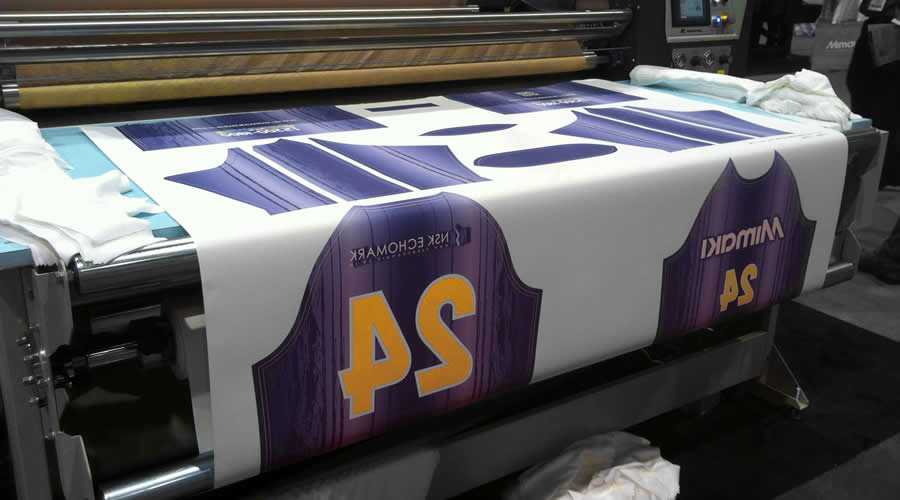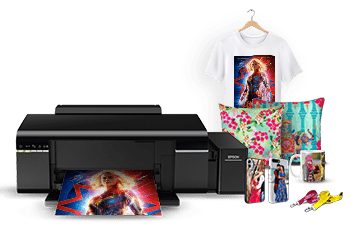From Conventional to Digital: Recognizing the Advancement of Fabric Printing
The change of fabric printing from typical methods like block printing and resist dyeing to modern methods such as display and digital printing marks a considerable shift in the fabric market. Conventional approaches, soaked in artisanal workmanship and cultural value, have actually gradually provided way to electronic innovations that offer unmatched accuracy, performance, and personalization. This shift not only boosts production abilities yet additionally aligns with growing demands for sustainable practices. Just how do these improvements influence the significance of towel printing, and what might the future hold for this ever-evolving craft?
Typical Towel Printing Techniques
In the very early stages of fabric manufacturing, conventional towel printing methods offered as the foundation of material layout, using both functionality and creative expression. Block printing, one of the oldest approaches, involved sculpting elaborate designs into wood blocks, which were then dipped in dye and pushed onto material.
Stand up to dyeing, including methods like batik and tie-dye, employed wax or other substances to protect against dye from passing through certain areas of the textile. This method produced striking contrasts and complex layouts, frequently imbued with social significance. Stenciling, another conventional method, involved cutting patterns into a product and applying dye through the openings, providing a simpler yet efficient method to produce repeated layouts.
These typical techniques not just formed the fabric sector's early growth however likewise prepared for future advancements. Each technique showed the social and local features of its beginning, maintaining and sharing artisanal knowledge with generations.
The Increase of Display Printing
The introduction of screen printing in the very early 20th century marked a significant departure from conventional methods, supplying extraordinary convenience and performance. Display printing allowed designers to generate elaborate patterns and vivid shades on materials, which were formerly challenging to accomplish with block printing or hand-painting techniques.
One of the crucial advantages of display printing is its ability to reproduce complicated designs widespread with amazing fidelity. This scalability made it greatly prominent in the commercial textile industry, where mass manufacturing without giving up quality is extremely important. Additionally, screen printing fits a large range of dyes and inks, increasing the combination of textures and coatings offered to developers.
Additionally, the process is extremely versatile, ideal for various textile kinds consisting of cotton, silk, and synthetics. This adaptability, integrated with its cost-efficiency for huge runs, solidified display printing's role as a cornerstone of modern textile manufacturing. Thus, the surge of display printing revolutionized the industry, pushing the limits of what was feasible in fabric style.

The Development of Digital Printing
Structure on the remarkable developments brought by screen printing, the textile industry experienced another groundbreaking development with the advent of digital printing. Emerging in the late 20th century, electronic printing revolutionized the way designs are transferred onto materials, supplying extraordinary flexibility and performance. Unlike traditional approaches, which usually called for considerable arrangement and substantial hands-on treatment, electronic printing utilizes computer-aided design (CAD) technology to produce detailed patterns straight onto the material with high precision.
This development has enabled fabric producers to meet the expanding need for modification and on-demand manufacturing. By getting rid of their website the need for screens and plates, digital printing reduces and decreases lead times material waste, making it a more sustainable option. The ability to publish complex images and a wide variety of shades in a solitary pass has actually opened brand-new creative methods for designers, cultivating a surge in artistic expression within the market.
Additionally, digital printing sustains smaller sized batch production runs, which is specifically helpful for niche markets and start-up style brands. This technical leap has not just boosted operational effectiveness but likewise democratized access to top quality fabric printing, setting the phase for future innovations in textile style and manufacturing.
Comparing Methods: Traditional Vs. Digital
While both digital and typical printing methods have their own special advantages, they differ considerably in terms of process, performance, and environmental effect. Traditional fabric printing, incorporating techniques like block printing and screen printing, involves hand-operated labor and intricate craftsmanship. These methods are commemorated for their capacity to produce rich a fantastic read structures and vibrant colors, frequently leading to one-of-a-kind, artisan-quality items. They are labor-intensive, lengthy, and often limited in terms of shade selection and design complexity.
In comparison, electronic printing utilizes innovative technology to transfer layouts straight onto material making use of inkjet printers. This method supplies unparalleled accuracy and a huge array of color options, enabling detailed and extremely comprehensive layouts. Digital printing is considerably faster, enabling quick turn-arounds and just-in-time production, which reduces the demand for big inventory storage space. Furthermore, it sustains personalization and little batch manufacturing, dealing with modern customer needs for personalized items.
From an ecological perspective, electronic printing is generally a lot more lasting. It uses much less water and produces very little waste contrasted to conventional approaches, which commonly involve considerable washing and coloring processes. Subsequently, digital printing is significantly favored in a period where environmental factors to consider are paramount.
Future Fads in Fabric Printing
One significant pattern is the boosted application of electronic printing modern technologies. Digital fabric printing is anticipated to dominate the market, driven by its effectiveness and versatility to consumer demands for individualized and limited-edition items. heat transfer vinyl printing.

Additionally, the consolidation of clever textiles, which incorporate electronic elements right into materials, is readied to reinvent the market. These textiles can give additional capabilities such as click site temperature policy, wellness tracking, and interactive functions. As technology remains to development, the intersection of electronic printing and wise fabrics will open brand-new avenues for practical and imaginative applications in towel printing.
Conclusion
The evolution of cloth printing from standard approaches to electronic advancements marks a considerable makeover in the fabric sector. While typical methods highlight artisanal craftsmanship and cultural heritage, digital printing offers exceptional precision, efficiency, and customization.
The makeover of towel printing from standard methods like block printing and resist coloring to contemporary strategies such as screen and electronic printing notes a considerable change in the textile sector. Screen printing enabled designers to generate intricate patterns and vivid shades on textiles, which were previously challenging to accomplish with block printing or hand-painting approaches.
Building on the amazing improvements brought by screen printing, the textile sector experienced one more groundbreaking growth with the arrival of digital printing. Branded clothing. Typical cloth printing, including techniques like block printing and display printing, involves hands-on labor and detailed craftsmanship. As innovation proceeds to development, the intersection of electronic printing and smart textiles will certainly open brand-new avenues for innovative and useful applications in cloth printing